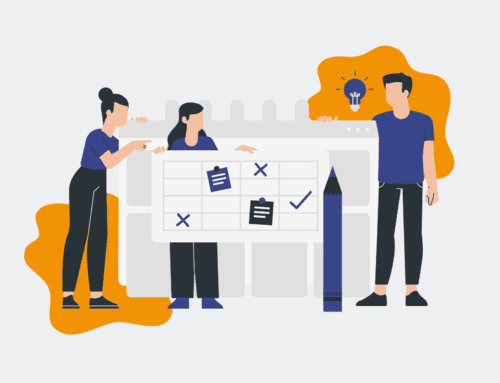A Step-by-Step Guide to Integrating Vincere.io with Your Existing ATS Using Boost.space Connectors
In today’s fast-paced recruitment landscape, data silos between your Applicant Tracking System (ATS) and specialized platforms like Vincere.io can severely hinder efficiency, lead to manual errors, and slow down your hiring process. Bridging this gap is not just about connecting systems; it’s about creating a unified talent ecosystem that empowers your team. This guide will walk you through the practical steps of leveraging Boost.space’s robust connectors to seamlessly integrate Vincere.io with your existing ATS, unlocking unparalleled operational fluidity and a single source of truth for your recruitment data.
Step 1: Define Your Integration Objectives and Data Flow
Before diving into technical configurations, it’s crucial to clearly define what you aim to achieve with this integration. Consider which specific data points need to be synchronized between Vincere.io and your ATS, such as candidate profiles, job orders, interview schedules, or placement details. Determine the direction of data flow (unidirectional or bidirectional) for each data type. For instance, should new candidates entered in your ATS automatically appear in Vincere.io, or vice-versa? Understanding these nuances from the outset will inform your mapping strategy and ensure the integration serves your operational needs precisely, preventing redundant data entry and maintaining data integrity across platforms.
Step 2: Set Up Your Boost.space Account and Connect Your Applications
Begin by logging into your Boost.space account, or creating one if you haven’t already. Boost.space acts as the central hub for your integrations, providing a secure and flexible environment to manage your data flows. Once inside, navigate to the “Connectors” or “Applications” section. Here, you will add both Vincere.io and your existing ATS as separate applications. This typically involves authenticating your accounts by providing API keys, login credentials, or OAuth tokens as prompted by Boost.space. Successfully connecting both platforms establishes the foundational links necessary for data exchange, verifying that Boost.space has the required permissions to access and manipulate data within each system.
Step 3: Map Data Fields Between Vincere.io and Your ATS
This is arguably the most critical step, requiring meticulous attention to detail. Within Boost.space, you will access the data mapping interface for your Vincere.io and ATS connectors. The goal is to identify corresponding fields in both systems and define how data should translate between them. For example, the “Candidate Name” field in your ATS must map to the “Full Name” field in Vincere.io. Pay close attention to data types (text, date, number) and ensure consistency to prevent errors. Boost.space often provides visual mapping tools, allowing you to drag and drop fields or select from dropdowns, simplifying this complex process. Thorough mapping ensures that data moves accurately and meaningfully across your integrated platforms.
Step 4: Configure Your Boost.space Data Synchronization Flows
With your applications connected and fields mapped, the next step is to define the actual data synchronization workflows within Boost.space. This involves specifying the triggers that initiate data transfer and the subsequent actions that occur. For example, you might create a flow where a “New Candidate” event in your ATS triggers the creation of a corresponding candidate record in Vincere.io. Conversely, a “Candidate Placement” event in Vincere.io could update the candidate’s status in your ATS. Boost.space provides a visual interface for building these flows, often using a “trigger-action” logic. You’ll define conditions for when data should sync, ensuring only relevant information is exchanged at the appropriate times.
Step 5: Implement Data Transformation and Enrichment Rules
Often, data formats or values might differ between Vincere.io and your ATS, requiring transformation before synchronization. Boost.space offers powerful tools to apply data transformation and enrichment rules within your flows. This could involve standardizing date formats, converting text values (e.g., changing “Active” to “Open” for a job status), or even enriching data by combining fields. For example, if your ATS stores first and last names separately but Vincere.io uses a single “Full Name” field, you can set up a rule to concatenate them. Leveraging these capabilities ensures that data arriving in the destination system is clean, consistent, and immediately usable, reducing manual data cleanup and improving overall data quality.
Step 6: Rigorously Test Your Integration Workflows
Before deploying your integration live, comprehensive testing is paramount to ensure everything functions as expected. Create test scenarios that mimic real-world usage, such as adding a new candidate in your ATS and verifying its accurate appearance in Vincere.io, or updating a job status in Vincere.io and confirming the change in your ATS. Boost.space typically provides logs and execution histories for each flow, allowing you to monitor data transfers and identify any errors. Pay close attention to edge cases and ensure all defined triggers and actions behave predictably. Iterative testing, making adjustments based on observed outcomes, is crucial for a robust and reliable integration.
Step 7: Monitor, Refine, and Scale Your Integrated System
Once your integration is live, the work isn’t over. Continuous monitoring is essential to ensure ongoing performance and data accuracy. Boost.space provides dashboards and alerts that can notify you of any failed syncs or anomalies, allowing for proactive intervention. As your business evolves, your integration needs may change. Be prepared to refine your data mappings, adjust synchronization flows, or even introduce new ones to accommodate new processes or data fields. The beauty of a flexible platform like Boost.space is its scalability, enabling you to expand your integrated ecosystem as your operational requirements grow, ensuring your Vincere.io and ATS remain harmoniously aligned for sustained recruitment success.
If you would like to read more, we recommend this article: The HR & Recruiting Automation Engine: Architecting Excellence with Make, Workfront, Boost.space, and Vincere.io









